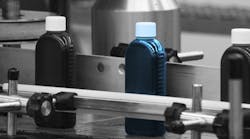You’re in the business of producing high-quality products. You want the systems that run your operations to just work. You don’t have the time, resources, or money to spend making sure those systems and tools integrate with each other or are upgraded to the right version.
The good news is there’s a system that not only works but also helps you lower operating costs—and it doesn’t require any heavy upfront resources or investment. Cloud manufacturing makes it all possible.
The Plex Manufacturing Cloud allows you to focus on producing your products while the system maintenance and infrastructure is on the shoulders of your cloud provider. You gain a sophisticated modern, scalable system to run your business without the IT burden. Cloud-based ERP software for food and beverage manufacturing also helps you cut costs with:
1.Shop Floor Control
Tap into real-time information on overall equipment effectiveness (OEE) to monitor performance improvement and develop a knowledge base of technical experience to respond quickly to maintenance problems that degrade productivity. With production procedures and quality inspections programmed directly into the system, you “operationalize” your processes to minimize human errors.
Shank’s Extracts, produces vanilla and other extracts, natural and artificial flavors, food colors, and syrups to a wide range of industrial, private label, and grocery customers worldwide. The company maintains over 2,400 active formulas and manages the quality of its products within its cloud ERP solution. Prep time for quality audits used to be a three-week ordeal but now Shank’s can quickly provide auditors data with a simple click.
2.End-to-End Traceability
Track and trace every ingredient from receipt through to finished product delivery, at least one-up and one-back in the supply chain. Deliver a speedy response to recalls by meeting mandated turnaround times and notification requirements—and isolate problem ingredients to limit the amount of material affected by a recall.
Green Flash Brewery, a craft brewery in San Diego, CA, improved product tracking significantly while reducing inventory discrepancies by 96 percent. And gone are the mountains of spreadsheets the company used to use to keep track of inventory.
3.Recall Risk Mitigation
Automating data collection not only helps you track and trace every ingredient but can also help you comply with food safety regulations - while lowering your risk of recalls. The earlier you can identify potential contaminants, process inconsistencies or quality failures, the earlier you can catch them - ideally, before shipping to customers.
Aaron Thomas Company, Inc., a full-service contract packaging company for food customers, needed to track 100 percent of its inventory at all times. After implementing cloud ERP, Aaron Thomas can now conduct mock recalls in a mere seven minutes with all documentation sent to a customer in under an hour—a process that previously took several people up to three days.
Discover more about how manufacturing cloud ERP can help you meet the challenges of your industry. Download the white paper: Best Practices in Food Traceability: A Cost-Effective, Proactive Approach Reduces Recall Risks.



